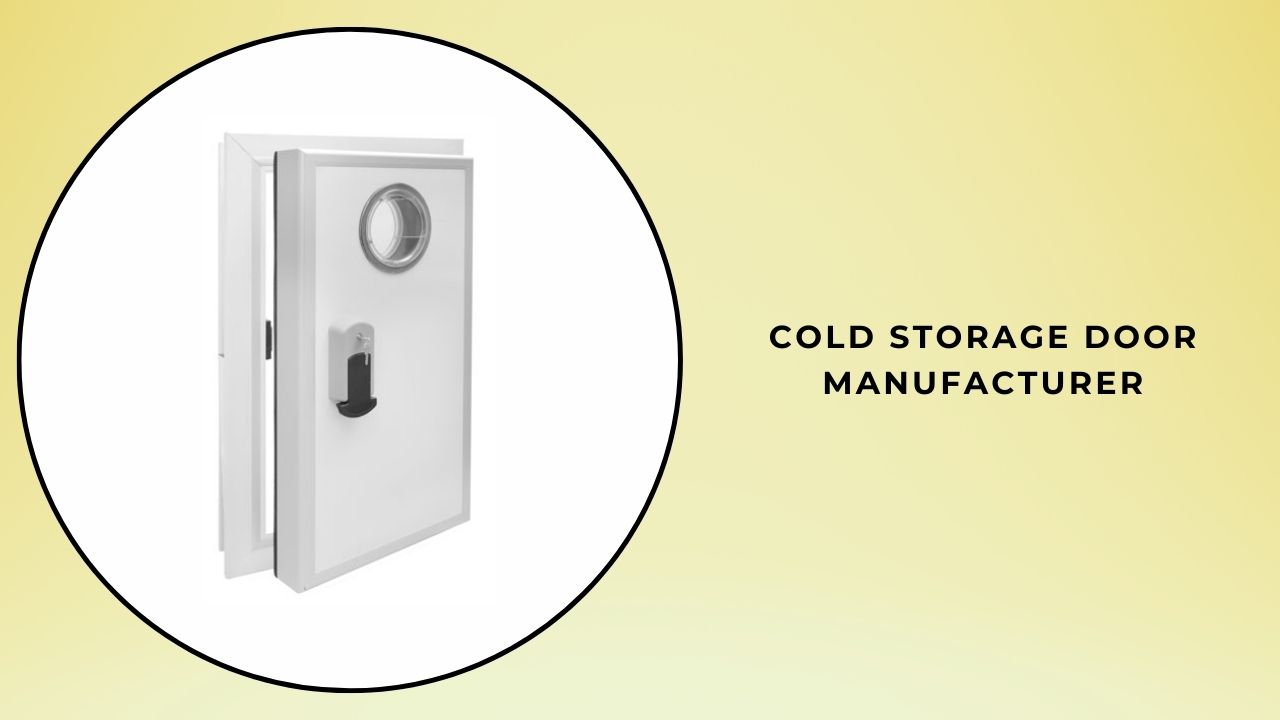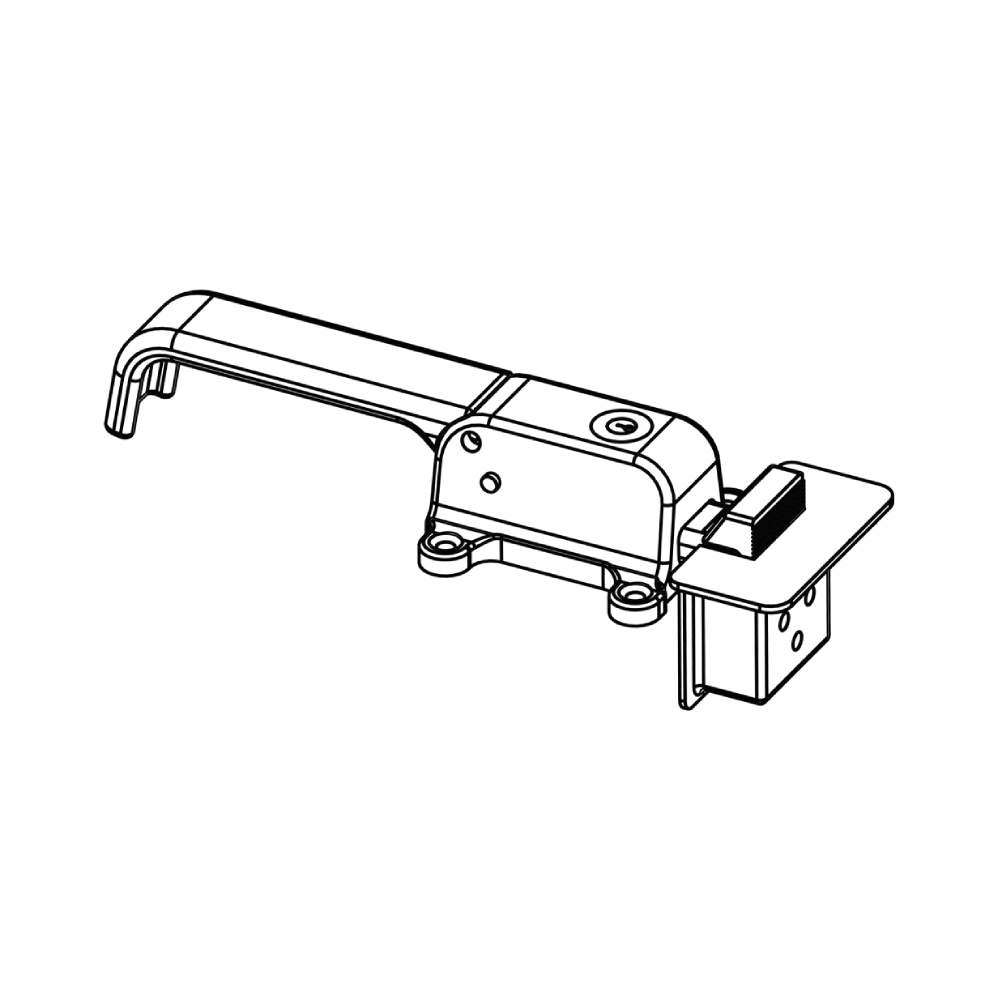The Role of Cold Storage Door Manufacturers
The Role of Cold Storage Door Manufacturers
Cold storage doors play a critical role in numerous industries such as food preservation, pharmaceutical sector, and logistics. These doors are designed to ensure that the internal environment of cold storage facilities remains optimal for storing temperature-sensitive products. Cold storage door manufacturers are experts who provide highly durable, energy-efficient, and secure door systems tailored to each customer’s specific requirements. Their role is to produce doors that maintain the integrity of the cold storage environment while allowing seamless access, which contributes to energy savings and operational efficiency.
Cold storage door manufacturers deliver solutions that add significant value to cold storage facilities by producing doors that offer superior insulation, security, and ease of use. With technological advancements, manufacturers can now offer increasingly customizable, automated, and high-performance doors. By integrating energy efficiency features and robust designs, these doors help businesses establish secure, cost-effective, and sustainable storage systems.
Types and Features of Cold Storage Doors
Cold storage doors are manufactured in various types, each designed to meet different industrial needs and storage conditions. Here are the most common cold storage door types and their key features:
Insulated Sliding Doors: Insulated sliding doors are typically used in smaller cold storage facilities or areas where space efficiency is required. These doors offer high insulation properties to ensure consistent temperatures inside the storage area. Available with manual or automatic opening options, they provide ease of use and feature tight sealing to prevent energy loss. The insulation materials used, such as polyurethane foam, contribute to energy efficiency while protecting stored products.
Sliding Cold Storage Doors: Sliding doors are widely used in large-scale cold storage facilities and offer a space-saving solution for high-traffic areas. These doors slide horizontally on a track, maintaining the integrity of the cold storage environment while providing easy access. Available in both manual and automatic versions, they can be enhanced with additional insulated panels to improve energy efficiency. These doors are particularly effective in loading zones and storage areas requiring frequent access.
Roll-Up Doors: Roll-up doors are ideal for environments requiring rapid access, such as cold storage warehouses, transfer points, and food processing facilities. These doors roll upward and open and close quickly. Roll-up doors are made with highly durable, insulated materials and provide excellent temperature control by preventing heat transfer. Integrated with automatic opening and closing mechanisms, they enhance workflow and minimize energy loss.
High-Speed Doors: High-speed doors are designed for environments requiring frequent and fast access, helping to maintain the internal temperature of cold storage areas. These doors open and close rapidly, minimizing downtime and preventing cold air from escaping. Commonly found in larger industrial facilities, they can be integrated with automation systems to boost operational efficiency. Made from durable, high-performance materials, they offer energy savings and effective temperature regulation.
Clean Room Cold Storage Doors: Clean room doors are used in environments where hygiene and contamination prevention are paramount, such as pharmaceutical warehouses, laboratories, and medical equipment storage areas. These doors are designed to create an environment that prevents the entry of dirt, dust, and bacteria. Clean room doors typically feature smooth surfaces, advanced sealing, and easy-to-clean designs, making them ideal for sterile environments. They are used in settings with strict hygiene standards.
Cold Storage Door Production with Advancing Technologies
Cold storage door manufacturers use advanced technologies in their designs to provide more efficient, durable, and secure door systems. From energy-efficient insulation materials to automatic opening mechanisms, new technologies enhance the performance and usability of cold storage doors. Some of the latest technological advancements in this field include:
Energy-Efficient Insulation: With growing concerns about energy consumption, manufacturers use advanced insulation materials like polyurethane and polystyrene, which offer superior thermal resistance. These materials prevent heat transfer and maintain consistent temperatures, reducing energy costs. Additionally, some manufacturers incorporate reflective barriers that reflect heat away from the cold storage environment, further enhancing energy efficiency.
Automation and Smart Controls: Automation technology has revolutionized cold storage door operations, enabling businesses to improve workflows and minimize human error. Smart control systems assist in monitoring and managing operations such as automatic opening and closing, temperature regulation, and energy usage tracking. These systems can be integrated with overall building management systems to provide real-time data and enhance operational efficiency. Sensors, motion detectors, and remote access systems can also be added to automated doors to improve performance.
Durability and Safety Features: The durability of cold storage doors is critical to maintaining the integrity of the storage environment. Manufacturers use advanced materials and coatings to increase the doors’ durability and lifespan. Corrosion-resistant surfaces, reinforced frames, and impact-resistant panels enhance performance and safety. Additionally, emergency release mechanisms, anti-pinch systems, and fail-safe features ensure safe operation even in the event of a malfunction.

Cold Storage Door Production Processes
Cold storage door production consists of several stages to ensure the doors meet requirements for temperature control, security, and ease of use. The production process for cold storage doors includes the following steps:
Design and Planning: The production process begins with understanding customer needs. Factors such as the type of cold storage facility, traffic levels, required insulation, and temperature range are considered in the door design. This stage also involves selecting the right materials and integrating energy-efficient features.
Material Procurement and Preparation: Once the design is finalized, the necessary materials are sourced. High-quality metals, insulated panels, seals, and coatings are carefully selected to ensure durability and energy efficiency. The materials are cut, shaped, and prepared for assembly according to the design specifications.
Assembly: During the assembly stage, all components of the door—frame, insulation, panels, and hardware—are brought together. Both skilled workers and automated machines are used to ensure proper assembly. This stage includes testing the door’s insulation properties, strength, and durability.
Testing and Quality Control: Each cold storage door undergoes rigorous testing to ensure compliance with industry standards for temperature control, durability, and safety. Insulation performance, airtightness, ease of use, and safety features are tested. Quality control processes verify that the door is free of defects or weaknesses before being shipped to the customer.
Application Areas of Cold Storage Doors
Cold storage doors are widely used in numerous sectors where temperature control and security are critical. The most common application areas of cold storage doors include:
Food Industry: Cold storage doors are vital in the food industry for preserving the freshness and safety of perishable products. These doors are used in cold storage warehouses, processing facilities, and areas storing dairy, meat, vegetables, and other perishable goods. Insulated doors are crucial in these environments for maintaining temperature consistency and reducing energy consumption.
Pharmaceutical and Medical Storage: Cold storage doors are also used in pharmaceutical and healthcare sectors for storing temperature-sensitive products, vaccines, medicines, and medical devices. These doors must meet strict hygiene and safety standards to preserve the integrity of stored items. Clean room cold storage doors are commonly used in these applications to ensure a sterile environment.
Logistics and Distribution: Cold storage doors are essential in logistics and distribution centers, particularly in facilities handling frozen or refrigerated products. These facilities rely on the efficient and reliable operation of cold storage doors. High-speed doors and automated systems are widely used in these environments to improve workflow and minimize energy loss.
Sustainability and Cold Storage Door Production
As energy efficiency becomes an increasingly important factor for businesses, cold storage door manufacturers focus on producing doors that meet sustainability goals. By using advanced insulation materials, integrating energy-saving technologies, and adopting eco-friendly production methods, these manufacturers contribute to reducing the environmental impact of cold storage facilities.
Additionally, many manufacturers use recyclable materials in their production processes and implement waste reduction strategies to minimize their environmental footprint. These sustainable practices help businesses reduce their carbon footprint and lower operating costs while ensuring optimal temperature control for temperature-sensitive products.








